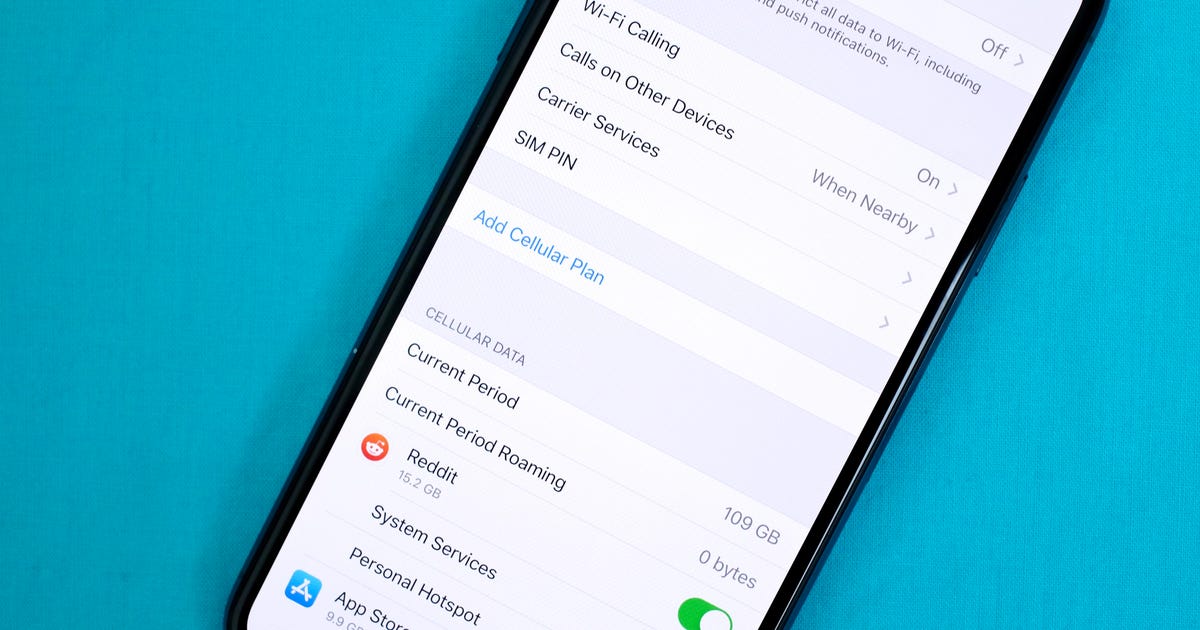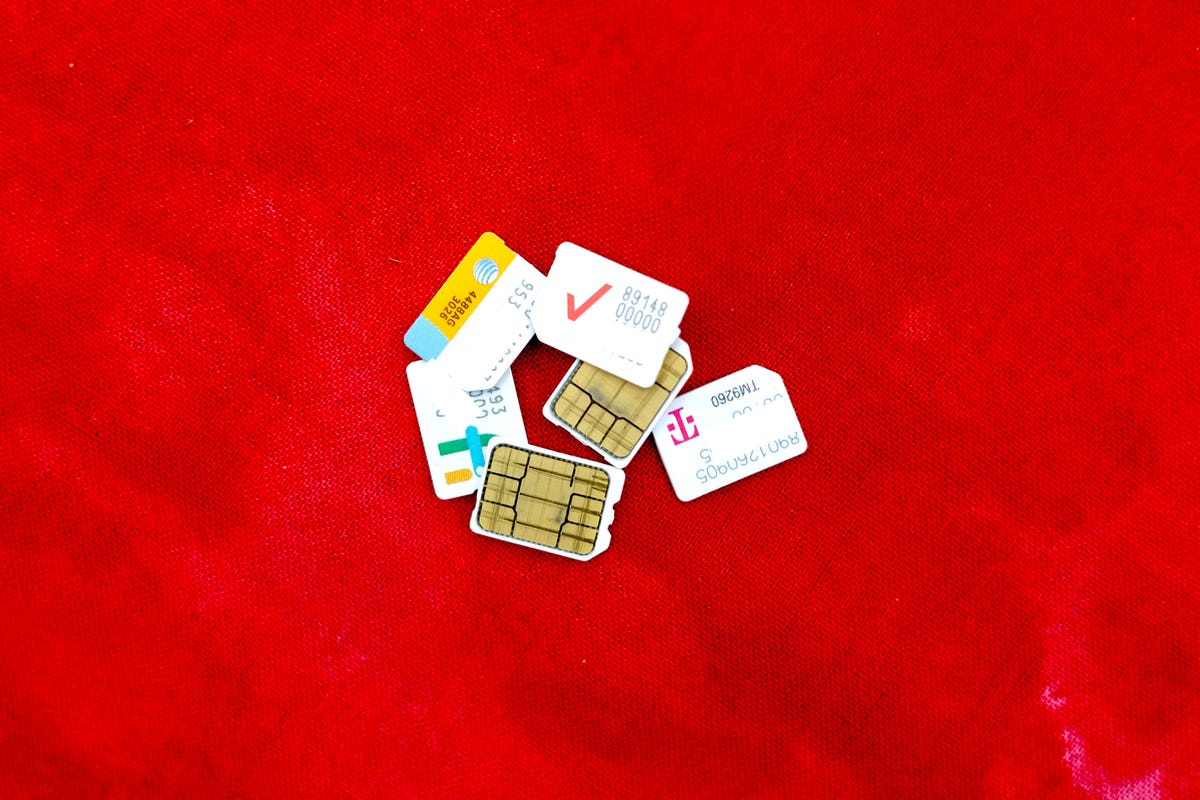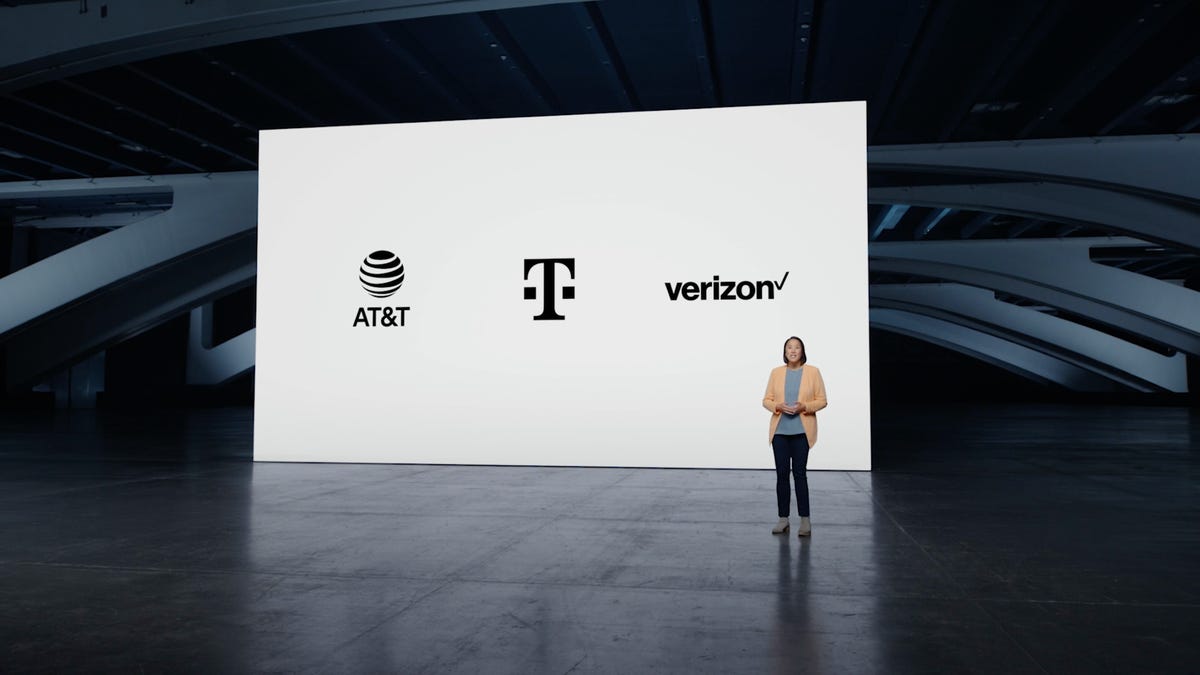
This story is part of Focal Point iPhone 2022, CNET’s collection of news, tips and advice around Apple’s most popular product.
Apple’s embrace of virtual, embedded SIM cards in the iPhone 14 line — eliminating the SIM card slot for US models — has led some online to worry that switching carriers is about to get a lot more difficult. Smaller carriers like Mint Mobile, US Mobile and Boost Mobile, however, see it as just the opposite.
“Mint has always believed in digital technologies that enhance and ease wireless services,” Aron North, Mint Mobile’s chief marketing officer, said in a statement to CNET. “Mint has been supporting [the] eSIM for almost two years because we knew, even back then, this innovation would allow users to switch faster and easier.”
Apple has supported digital SIM cards dating as far back as 2018’s iPhone XS, XS Max and XR. Last year’s iPhone 13 line expanded that support and allowed for multiple eSIMs to be enabled at once, letting customers easily swap carriers or make use of multiple phone numbers, for instance, for work and personal use.
While the physical SIM card slot won’t be included on the iPhone in the US, international phones will still have a physical SIM card slot.
“I think it’s transformational,” Ahmed Khattak, founder and CEO of US Mobile, a mobile virtual network operator that offers service on Verizon and T-Mobile’s respective networks. “I think the fact that it even happened … I’m shaking my head … because it really democratizes connectivity.”
“I didn’t expect that they [would] just go cold turkey on physical SIM cards,” he adds. “The fact that they just got rid of it like headphone jacks is surprising.”
Boost Mobile CEO Stephen Stokols believes eSIM technology makes it “way easier to switch” providers. Boost Mobile uses a combination of AT&T, T-Mobile and parent Dish’s wireless networks. Once a Sprint brand, it became part of Dish as a result of T-Mobile’s 2020 merger with Sprint, with the satellite TV provider now in the process of becoming a fourth network option to rival AT&T, T-Mobile and Verizon.
Later this year Dish will start offering Boost Infinite, a wireless service that seems set to more directly compete with the big three providers. Having an easier way to get customers to switch networks could be key to its ability to grow.
No different than signing up for Netflix

Physical SIM cards.
Jason Cipriani/CNET
A physical SIM card, Stokols says, usually takes a few days to arrive if ordered online. Customers then have to put the SIM card into their phone and go through an activation process. With the eSIM, he says the activation and transferring can be done “immediately” at the time of purchase.
“It looks a lot like software… It’s literally ‘you sign up online and you activate.’ No different than [when] you sign up for Netflix.”
Khattak has nearly 250,000 subscribers for his US Mobile service, with a third of his customers using eSIMs today.
“It’s easier for you to move in, it’s easy for you to move out,” he says. “I think the reason why people think it’s not that easy is because most carriers have made it very difficult” to switch in the past. “But I think if you try it out… you realize it’s so easy.”
Khattak says that the process can potentially take “less than a minute to get your device provisioned with us.” If you wanted to leave, that could similarly take “less than a minute to cancel your phone number” and bring it to someone else, which is known as “porting.”
He notes that the porting process is largely the same via eSIM as it was with physical SIM cards, but because you don’t need to wait for a physical SIM card to show up it can go faster, leading to a potentially more seamless experience. You don’t have to deal with figuring out what size SIM card goes into your phone, when to put it in during activation or having to search for 16- or 17-digit numbers to enter into a website or repeat to a customer service representative to activate the physical SIM cards.
Khattak envisions that, over the next couple of years “the end result” of the switch to eSIM technology will lead to people “buying their cell phone connectivity on the app stores, not through local stores.”

All three of the major US carriers support eSIM.
Apple/Screenshot by Sarah Lord/CNET
All three of the main US providers support the eSIM. Some, like T-Mobile, have even been utilizing the technology to offer free trials of their networks as a way to lure customers from competitors.
Last month it expanded the program, now dubbed Network Pass, to allow for three free months of T-Mobile service. Using the eSIM, the virtual SIM card is downloaded from T-Mobile’s app and is designed to exist alongside your current provider to let you see if T-Mobile’s network works as well or exceeds what a rival might be offering. You will need your phone to be unlocked to participate, but the company doesn’t run a credit check or even take down a credit card number.
If you want to switch, the app will guide you through the process. If you want to stick with your current provider, you can simply delete the eSIM inside the settings app of your phone.
US Mobile and Verizon-owned Visible offer similar free trial programs over apps that use an eSIM to allow you to try out their respective networks.
Growing pains expected
Although there is plenty of optimism from some smaller wireless players for the future, some wireless watchers do envision a few potential issues in the transition. For one, finding out who’s accepting eSIMs is not readily apparent. Apple has a list of eSIM-ready wireless providers on its website, but as of when this is written, that only includes 39 networks and still lacks some MVNOs, including US Mobile.
“In the short term, there are going to be a lot of growing pains as carriers streamline the process of converting from physical SIMs,” Avi Greengart, an analyst for research firm Techsponential, tells CNET. “Things go wrong,” he says, noting that there are issues with MVNOs that don’t currently support the eSIM, as well as potentially with the process of transferring from an eSIM to a physical SIM card if you needed to go back to an older device.
That said, Greengart does see the benefits in the technology, particularly when it comes to consumers’ flexibility for choosing network providers, switching between networks and managing multiple phone lines on one account.
“I think in the short term, there’s going to be some pain, and in the long term, I think it’ll actually be OK.”
